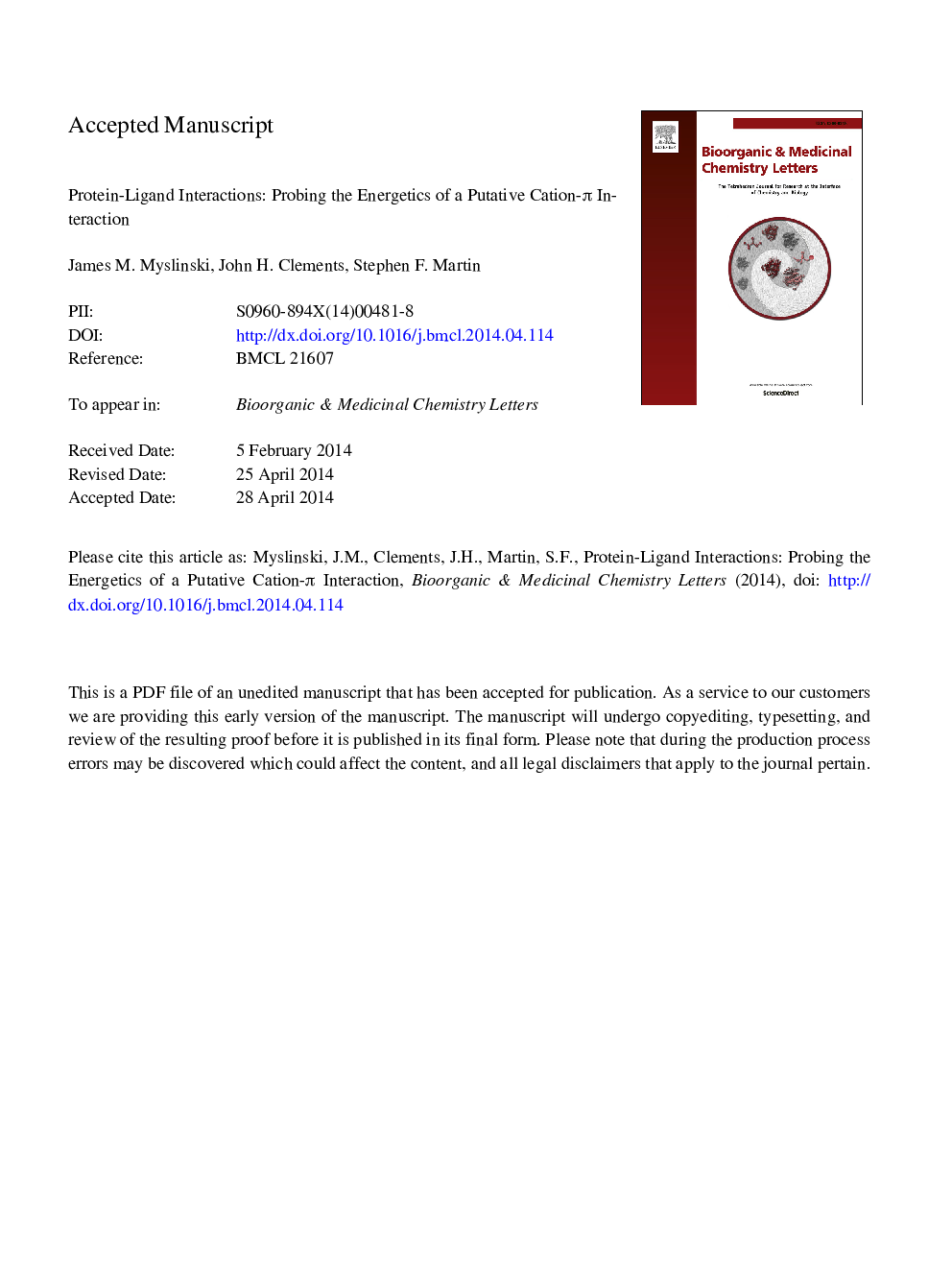| Article ID | Journal | Published Year | Pages | File Type |
|---|---|---|---|---|
| 10591806 | Bioorganic & Medicinal Chemistry Letters | 2014 | 10 Pages |
Abstract
In order to probe the energetics associated with a putative cation-Ï interaction, thermodynamic parameters are determined for complex formation between the Grb2 SH2 domain and tripeptide derivatives of RCO-pTyr-Ac6c-Asn wherein the R group is varied to include different alkyl, cycloalkyl, and aryl groups. Although an indole ring is reputed to have the strongest interaction with a guanidinium ion, binding free energies, ÎG°, for derivatives of RCO-pTyr-Ac6c-Asn bearing cyclohexyl and phenyl groups were slightly more favorable than their indolyl analog. Crystallographic analysis of two complexes reveals that test ligands bind in similar poses with the notable exception of the relative orientation and proximity of the phenyl and indolyl rings relative to an arginine residue of the domain. These spatial orientations are consistent with those observed in other cation-Ï interactions, but there is no net energetic benefit to such an interaction in this biological system. Accordingly, although cation-Ï interactions are well documented as important noncovalent forces in molecular recognition, the energetics of such interactions may be mitigated by other nonbonded interactions and solvation effects in protein-ligand associations.
Keywords
Related Topics
Physical Sciences and Engineering
Chemistry
Organic Chemistry
Authors
James M. Myslinski, John H. Clements, Stephen F. Martin,
